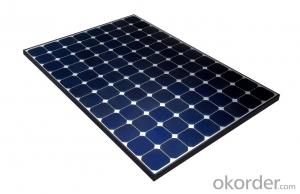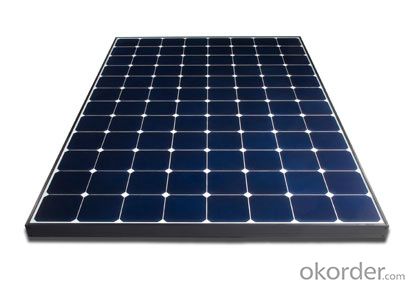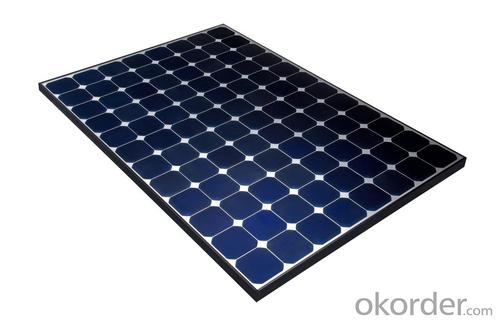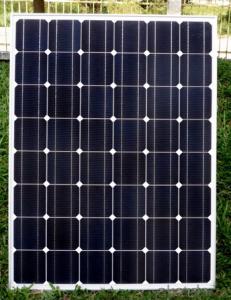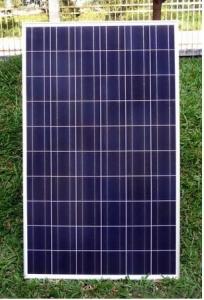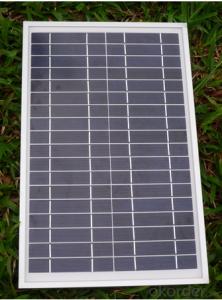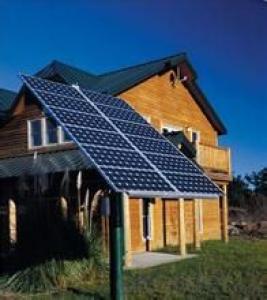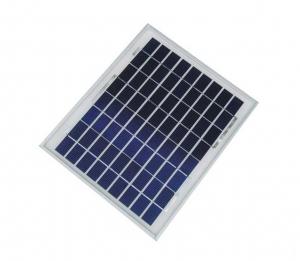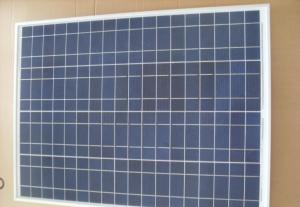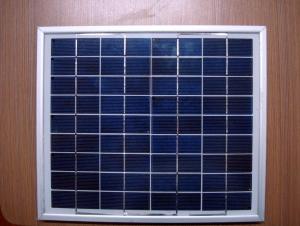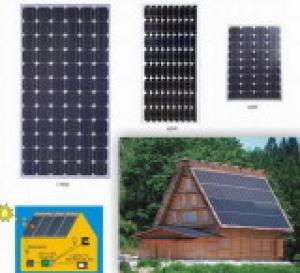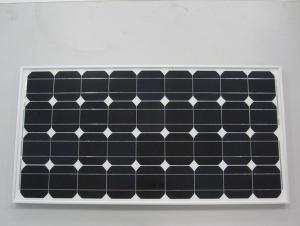A1 Solar Panels - Mono Solar Panel 290W A Grade with Cheapest Price
- Loading Port:
- Shanghai
- Payment Terms:
- TT OR LC
- Min Order Qty:
- 50 watt
- Supply Capability:
- 50000 watt/month
OKorder Service Pledge
OKorder Financial Service
You Might Also Like
Specification
Mono Solar Panel 290W A Grade with Cheapest Price
Product description
60 cell multi-crystalline solar module. 40mm natural anodised frame. IP65 rated Jbox, 1m solar cable and a pair of MC4 connectors.TÜV SÜD,SABS ISO 9001:2008 certified.
Most solar modules are currently produced from crystalline silicon (c-Si) solar cells made of multicrystalline andmonocrystalline silicon. In 2013, crystalline silicon accounted for more than 90 percent of worldwide PV production, while the rest of the overall market is made up of thin-film technologies using cadmium telluride, CIGS and amorphous silicon[7]Emerging, third generation solar technologies use advanced thin-film cells. They produce a relatively high-efficiency conversion for the low cost compared to other solar technologies. Also, high-cost, high-efficiency, and close-packed rectangular multi-junction (MJ) cells are preferably used in solar panels on spacecraft, as they offer the highest ratio of generated power per kilogram lifted into space. MJ-cells are compound semiconductors and made of gallium arsenide (GaAs) and other semiconductor materials. Another emerging PV technology using MJ-cells is concentrator photovoltaics (CPV).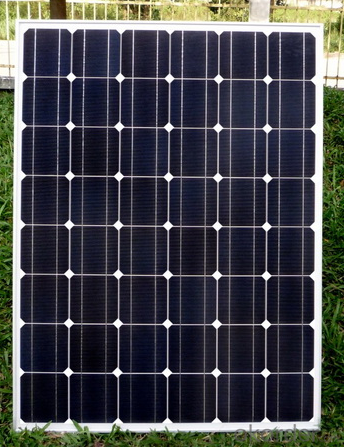
Application
Industrial
Commercial
Residential
Product feather
solar panel refers to a panel designed to absorb the sun's rays as a source of energy for generating electricity or heating.
A photovoltaic (in short PV) module is a packaged, connected assembly of typically 6×10 solar cells. Solar Photovoltaic panels constitute the solar array of a photovoltaic system that generates and supplies solar electricityin commercial and residential applications. Each module is rated by its DC output power under standard test conditions, and typically ranges from 100 to 365 watts. The efficiency of a module determines the area of a module given the same rated output – an 8% efficient 230 watt module will have twice the area of a 16% efficient 230 watt module. There are a few solar panels available that are exceeding 19% efficiency. A single solar module can produce only a limited amount of power; most installations contain multiple modules. A photovoltaic system typically includes a panel or an array of solar modules, a solar inverter, and sometimes a battery and/or solar tracker and interconnection wiring.
Packaging
24-26pcs into carton 312pcs for 20 foot container 712pcs for 40 foot container.
- Q: Can solar panels be used in areas with high levels of rainfall?
- Yes, solar panels can be used in areas with high levels of rainfall. While rainfall may temporarily reduce the amount of sunlight reaching the panels, modern solar panels are designed to efficiently capture and convert even diffuse light. Additionally, regular rainfall can help keep the panels clean, improving their overall performance.
- Q: Can solar panels be used in conjunction with wind turbines?
- Yes, solar panels can indeed be used in conjunction with wind turbines. This combination of renewable energy sources can provide a more reliable and consistent power supply, as wind and solar resources often complement each other. During periods of low sunlight, wind turbines can generate electricity, and during calm periods with low wind, solar panels can continue to produce power. Integrating both technologies can enhance the overall efficiency and effectiveness of a renewable energy system.
- Q: hi,i have 4 solar panels. I can get 9V 400mA when i wired them parallel. The question is: how can i make a regulator circuit to store power into batteries.
- wire them in series parallel to get 8 volts at 200 mA, and that should charge a 2 volt battery. You may want to put in a series diode to prevent the battery from discharging into the panel when the sun is out. At 200 mA, depending on the battery size, you may not need much control, as that low a current will not overcharge a large battery, like a small auto battery. In fact it will take a very long time to charge it. edit: But do i need to add a regulator? If by that you mean a voltage regulator, no, as a solar panel has a high output resistance, and that will limit the current into the battery. If you mean a charge controller, if the battery is small, you may need a charge contoller to avoid overcharging the battery. But that is not a voltage regulator. .
- Q: When people buy small solar panels, what are the steps to making it actually charge or run something.. I'm completely new to this of course and im curious. what kinda of wire and other devices are needed and how do you attach the wire and everything..
- The Earth4Energy kit is the best system for people who are looking to save money on their home energy bill and want to build a energy generator at home .There is no other kit out there in the market like Earth4Energy that explains clearly with manuals or even includes videos. The Earth4Energy kit is available online for purchase. Many people can now have access to alternative solar and wind energy. and u will find step by step instructions
- Q: Actually I want to convert my home electricity on Solar Panel to cut down electricity costI have 2 AC's, a refrigerator, 3 Television, 2 Computers, 4 Fans etc
- good okorder lots of good ideas there
- Q: What is the lifespan of solar panel batteries?
- The lifespan of solar panel batteries can vary depending on various factors such as the type and quality of the battery, usage patterns, and maintenance. On average, solar panel batteries generally last between 5 to 15 years. However, with proper care and regular maintenance, some high-quality batteries can last up to 20 years or more.
- Q: Can I add reflectors or mirrors around the solar panels to increase the power they generate?
- You could (an example of concentrating sunlight is called cloud gain, where the edge of a cloud will intensify sunlight as it passes between the sun and your panels), but that will make your panels run hotter and will probably reduce their life. It's better from a system design standpoint to simply get another panel or two. DK
- Q: Does anyone own any and would you recommend them? right now i only own solar stake lights and i use them during the summer in my yard. But during the winter i take them out because they don't charge well. I live in toronto canada where it snows a lot during the winter, would it even be worth it to buy solar panels? Would they get covered with snow if the were mounted on my roof and get ruined? I plan on buying some when i purchase my own home.Any info would be appreciated:)
- You may have to put a snow roof over the wind generator to keep it working. A solar hot water system might be hard investment where you are but it could work if it's designed right. Check out the solar companies in your area for ideas.
- Q: Basically I need a custom solar panel created. I won't go into detail but the dimensions need to be around 4''x2.5'' and be as thin as possible.
- okorder Other sources available on the first Link also. Wingman
- Q: Can solar panels be installed on universities or educational campuses?
- Yes, solar panels can be installed on universities or educational campuses. In fact, many educational institutions around the world have already embraced solar energy as a sustainable and renewable source of power. Installing solar panels on universities and educational campuses not only helps reduce carbon emissions and dependence on fossil fuels but also provides valuable hands-on learning opportunities for students studying renewable energy and sustainability. Additionally, solar panels can help universities save on energy costs in the long run, allowing them to allocate more resources to other educational initiatives.
Send your message to us
A1 Solar Panels - Mono Solar Panel 290W A Grade with Cheapest Price
- Loading Port:
- Shanghai
- Payment Terms:
- TT OR LC
- Min Order Qty:
- 50 watt
- Supply Capability:
- 50000 watt/month
OKorder Service Pledge
OKorder Financial Service
Similar products
Hot products
Hot Searches
Related keywords


